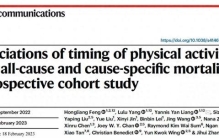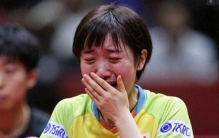6个技术步骤减腰腹脂肪,36篇文献的总结!
很多健身爱好者都有这个困惑:为啥减来减去,都是腰腹部脂肪最难减?
首先,索队带你来认识一下腹部脂肪吧!
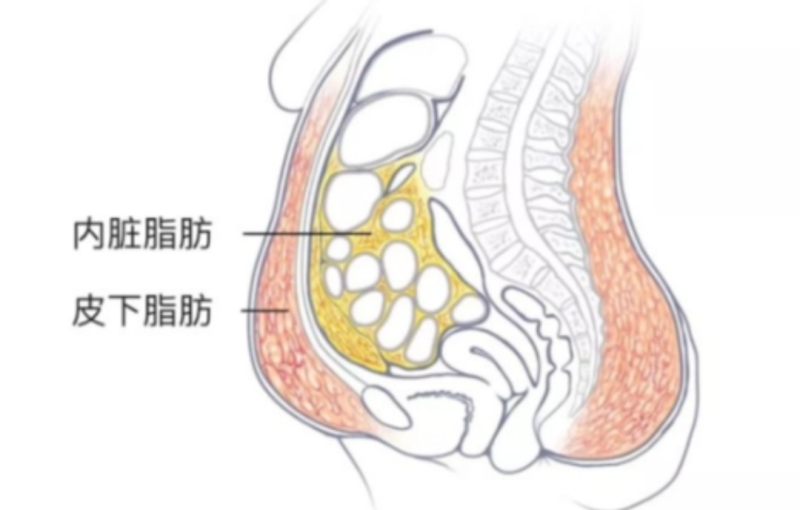
皮下脂肪:顾名思义,就是只长在肚皮之下而没长在肚子里的脂肪,它对健康没啥影响,只对美观有影响。
内脏脂肪:它们是长在肚子里脂肪,主要环绕在肝、胃和肠等重要器官周围,它们是必要的,但过量以后会对健康和美观产生影响,很多疾病(包括但不限于二型糖尿病及动脉血栓等)的根源都是它们。
一般而言,一个人的皮下脂肪越多,它的内脏脂肪也会越多。
但这也不绝对,比如胖瘦子就是指皮下脂肪很少(看起来很瘦)而内脏脂肪很多的一类人。
而很多人体习惯差异、或者疾病也会导致内脏脂肪激增。
导致内脏脂肪增加的常见原因
1、高体脂率:这点不必多解释
2、雄性激素:是的,雄激素会让人体更倾向于把脂肪以内脏脂肪的形式存储下来,因此很多爱好者在执行“脏增肌期”后,内脏脂肪超标。
但是,很可怕的事,假设男性的雄激素大幅度下降、雌激素上升,也会导致肥胖且更难减下来(缺乏睾酮的恶果,你懂的)。
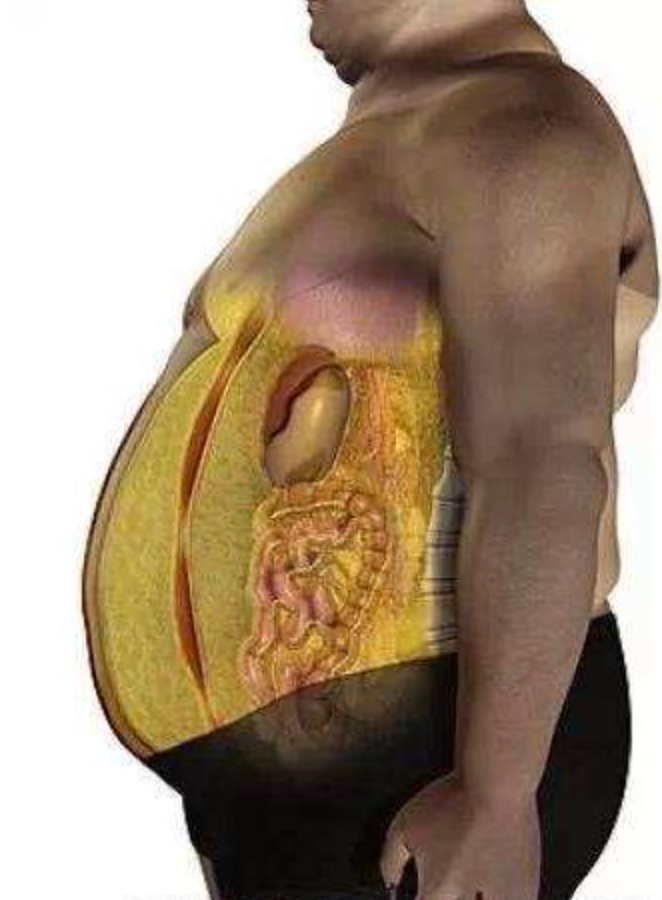
3、绝经后:这点和上一点基本相通,女性在绝经后由于基本不再分泌雌激素,也会在更多雄激素的影响下从梨型胖(脂肪主要长屁股和腿上)转化为苹果型胖(脂肪主要长肚子里)。
4、衰老:是的,越老也越容易长肚子(这可能与越老细胞分泌炎症因子越多有关)。
5、长期压力太大:压力会促使人体分泌压力激素皮质醇,这种激素会让脂肪多往肚子上堆。

6、剧烈变化的饮食计划:不少人在减脂期会大幅度变化饮食计划,这也会致使激素波动从而带来腰腹脂肪堆积。
此外,基因也对脂肪分布有一定影响。
有些人就是会天生比其他人更容易长肚子,不过反正现在也不可能给人做基因改造,这一点索队也不展开讲。
如何针对性的减少腰腹脂肪囤积可能?
抛开咱们改变不了的东西(比如年龄和基因等),下面就让咱们来看看怎么从其他地方努力,奔向水蛇腰吧!
在给大众指路之前,索队首先要先把特例交代在前面。
在今天这个问题上,有一类人群的肚子变大的原因是和其他人都不太一样的,那就是孕妇。

女性在生产后,就算恢复到了妊娠前的体重,肚子也会比之前更“难看”了,这是因为怀孕让腹部的组织和肌肉本身都变松弛了,脂肪和其他组织都失去了约束,肚子就会变得不再紧致如初。
也正是因此,产后恢复的市场一直不小。
好好做恢复也的确能解决上述的问题,但这是需要不少时间精力的,这也是母亲伟大的原因之一(谢谢我的妈妈和我老婆)。
OK,现在开始正菜——6步告别腰腹脂肪。
下面这六步中,也许有不少是你已经看过的(毕竟肚腩作为全民公敌已经,人人都在写还写了很久了),但索队想说,知道不代表做到,而身材这件事,只有坚持做好才会有改变,所以再来复习一遍,让自己更有动力真做下去,也没什么不好。
步骤一:明确你为什么要瘦肚子
做好这一步有助于让你更有动力坚持下去。
你是为了美还是为了健康?
为了健康的话,是因为医嘱吗?你的腰围是否已经超过了健康警戒线(男性94厘米,女性80厘米)?

为了美的话,是不是因为想逃避其他大问题才这样想的吗?你对自己美的追求是自我和解好以后的自我决定,还是为了迎合大众审美?
好好思考清楚这些问题,你才能真的弄明白你能不能坚持下去、可以坚持多久以及最终要坚持到什么结果为止,明确这几点你才更可能成功减肚子。
步骤二:单独减肚子是不可能的
通过普通的锻炼和调整饮食的方法是不可能局部减肚子的,这就像通过一般方法也练不大一头肌一样。
此外,在不损伤身体和动用高科技的前提下,一个月最多能减掉2.5厘米的腰围。
尽管我们常说“练腹肌不能帮助减肚子”,但腰腹脂肪减不下去的人腹肌训练必然不够有效。注意——索队用的词汇是“有效”。
你每天去卷腹,这不叫“有效练腹!!!”

有效练腹,你得把腹肌当成一块顽固、强大、耐操的肌肉,用练手臂/背部/一头肌的态度去对待它!
步骤三:多吃天然非精加工食物
虽然除了芹菜汁之外没什么食品可以让你的肚子变小,但精加工食品的确更容易搞大你的肚子,虽然大家还是喜欢在疯狂星期四被V50搞大肚子就是了。
这是因为天然食品会显著比精加工食品更饱腹、营养素密度更高、还热量更低,虽然这道理其实并不必索队多说。
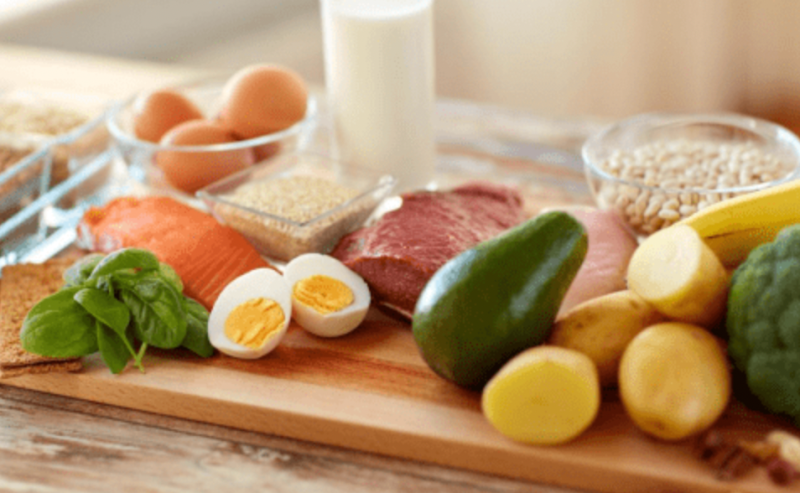
不仅如此,精加工食品还更容易含有更易吸收的脂肪、碳水形式,这玩意在让男人也“怀孕”的方面非常有效,所以要想瘦肚子,还是多吃天然食物吧。
尤其是,高膳食纤维、低GI的主食,会大幅度减少腰腹脂肪的增长可能!
注意,这里非精加工食物,也包括各种“健康欧包”、“健康食物”。
步骤四:慢慢吃到饱
进食速度实际上会显著影响你的胃口,你吃得越快,就越容易吃下去越多,也就越难看到你的6块腹肌。
所以,从今天开始细嚼慢咽每一口吧,坚持下去,和卡比兽式进食说拜拜。
步骤五:找到你喜欢并能坚持下去的运动
什么运动模式最有效?跑步?HIIT?篮球?唱跳RAP?
注意——这个事情其实不难,选择你热爱的+能坚持的,而不是运动形式。
保持每周不少于4次运动,并且逐步增加运动量。

也许你会想着去做HIIT,没错,其实HIIT相对传统有氧,确实瘦的效率更高(是真的!),空腹有氧也是!
但可惜的是,如果你本身指望的是“HIIT几天就瘦了”,那滚你的蛋吧!
你花了若干年胖起来,凭什么让你不费吹灰之力就瘦下去?
步骤六:以积极的心态去践行上述五步
以上便是只要坚持下去就能瘦肚子的六大步骤,祝大家在看完并照做之后,今年夏天就都能秀出小蛮腰!
参考文献
1. Karastergiou, Kalypso, Steven R. Smith, Andrew S. Greenberg, and Susan K. Fried. 2012. “Sex Differences in Human Adipose Tissues – the Biology of Pear Shape.” Biology of Sex Differences.
2. Björntorp, P. 1996. “The Android Woman–a Risky Condition.” Journal of Internal Medicine 239 (2): 105–10.
3. Trayhurn, Paul. 2005. “Adipose Tissue in Obesity—An Inflammatory Issue.” Endocrinology 146 (3): 1003–5.
4. Lee, Mi-Jeong, Yuanyuan Wu, and Susan K. Fried. 2013. “Adipose Tissue Heterogeneity: Implication of Depot Differences in Adipose Tissue for Obesity Complications.” Molecular Aspects of Medicine 34 (1): 1–11.
5. Karpe, Fredrik, and Katherine E. Pinnick. 2014. “Biology of Upper-Body and Lower-Body Adipose Tissue—link to Whole-Body Phenotypes.” Nature Reviews. Endocrinology 11 (2): 90–100.
6. Nauli, Andromeda M., and Sahar Matin. 2019. “Why Do Men Accumulate Abdominal Visceral Fat?” Frontiers in Physiology 10 (December): 1486.
7. Ambikairajah, Ananthan, Erin Walsh, Hossein Tabatabaei-Jafari, and Nicolas Cherbuin. 2019. “Fat Mass Changes during Menopause: A Metaanalysis.” American Journal of Obstetrics and Gynecology 221 (5): 393–409.e50.
8. Sepe, Anna, Tamara Tchkonia, Thomas Thomou, Mauro Zamboni, and James L. Kirkland. 2011. “Aging and Regional Differences in Fat Cell Progenitors – a Mini-Review.” Gerontology 57 (1): 66–75.
9. Drapeau, V., F. Therrien, D. Richard, and A. Tremblay. 2003. “Is Visceral Obesity a Physiological Adaptation to Stress?” Panminerva Medica 45 (3): 189–95.
10. Schleinitz, Dorit, Yvonne Böttcher, Matthias Blüher, and Peter Kovacs. 2014. “The Genetics of Fat Distribution.” Diabetologia 57 (7): 1276–86.
11. Loh, Nellie Y., Matt J. Neville, Kyriakoula Marinou, Sarah A. Hardcastle, Barbara A. Fielding, Emma L. Duncan, Mark I. McCarthy, et al. 2015. “LRP5 Regulates Human Body Fat Distribution by Modulating Adipose Progenitor Biology in a Dose- and Depot-Specific Fashion.” Cell Metabolism 21 (2): 262–73.
12. Widen, E. M., and D. Gallagher. 2014. “Body Composition Changes in Pregnancy: Measurement, Predictors and Outcomes.” European Journal of Clinical Nutrition 68 (6): 643–52.
13. Lean, M. E., T. S. Han, and C. E. Morrison. 1995. “Waist Circumference as a Measure for Indicating Need for Weight Management.” BMJ 311 (6998): 158–61.
14. Ross, Robert, Ian J. Neeland, Shizuya Yamashita, Iris Shai, Jaap Seidell, Paolo Magni, Raul D. Santos, et al. 2020. “Waist Circumference as a Vital Sign in Clinical Practice: A Consensus Statement from the IAS and ICCR Working Group on Visceral Obesity.” Nature Reviews. Endocrinology 16 (3): 177–89.
15. Ntlholang, Ontefetse, Kevin McCarroll, Eamon Laird, Anne M. Molloy, Mary Ward, Helene McNulty, Leane Hoey, et al. 2018. “The Relationship between Adiposity and Cognitive Function in a Large Community-Dwelling Population: Data from the Trinity Ulster Department of Agriculture (TUDA) Ageing Cohort Study.” The British Journal of Nutrition 120 (5): 517–27.
16. Alberti, K. G. M. M., Robert H. Eckel, Scott M. Grundy, Paul Z. Zimmet, James I. Cleeman, Karen A. Donato, Jean-Charles Fruchart, et al. 2009. “Harmonizing the Metabolic Syndrome: A Joint Interim Statement of the International Diabetes Federation Task Force on Epidemiology and Prevention; National Heart, Lung, and Blood Institute; American Heart Association; World Heart Federation; International Atherosclerosis Society; And International Association for the Study of Obesity.” Circulation 120 (16): 1640–45.
17. Salpeter, S. R., J. M. E. Walsh, T. M. Ormiston, E. Greyber, N. S. Buckley, and E. E. Salpeter. 2006. “Meta-Analysis: Effect of Hormone-Replacement Therapy on Components of the Metabolic Syndrome in Postmenopausal Women.” Diabetes, Obesity & Metabolism 8 (5): 538–54.
18. Dorfman, Suzanne E., Didier Laurent, John S. Gounarides, Xue Li, Tara L. Mullarkey, Erik C. Rocheford, Farid Sari-Sarraf, Erica A. Hirsch, Thomas E. Hughes, and S. Renee Commerford. 2009. “Metabolic Implications of Dietary Trans-Fatty Acids.” Obesity 17 (6): 1200–1207.
19. Oteng, Antwi-Boasiako, and Sander Kersten. 2020. “Mechanisms of Action of Trans Fatty Acids.” Advances in Nutrition 11 (3): 697–708.
20. Souza, Russell J. de, Andrew Mente, Adriana Maroleanu, Adrian I. Cozma, Vanessa Ha, Teruko Kishibe, Elizabeth Uleryk, et al. 2015. “Intake of Saturated and Trans Unsaturated Fatty Acids and Risk of All Cause Mortality, Cardiovascular Disease, and Type 2 Diabetes: Systematic Review and Meta-Analysis of Observational Studies.” BMJ 351 (August): h3978.
21. Dhaka, Vandana, Neelam Gulia, Kulveer Singh Ahlawat, and Bhupender Singh Khatkar. 2011. “Trans Fats-Sources, Health Risks and Alternative Approach – A Review.” Journal of Food Science and Technology 48 (5): 534–41.
22. Dupuit, Marine, Florie Maillard, Bruno Pereira, Marcelo Luis Marquezi, Antonio Herbert Lancha Jr, and Nathalie Boisseau. 2020. “Effect of High Intensity Interval Training on Body Composition in Women before and after Menopause: A Meta-Analysis.” Experimental Physiology 105 (9): 1470–90.
23. Wu, T., X. Gao, M. Chen, and R. M. van Dam. 2009. “Long-Term Effectiveness of Diet-plus-Exercise Interventions vs. Diet-Only Interventions for Weight Loss: A Meta-Analysis.” Obesity Reviews.
24. Kingsley, Michael I., Daniel Wadsworth, Liam P. Kilduff, Jane McEneny, and David Benton. 2005. “Effects of Phosphatidylserine on Oxidative Stress Following Intermittent Running.” Medicine and Science in Sports and Exercise 37 (8): 1300–1306.
25. Gaullier, Jean-Michel, Johan Halse, Hans Olav Høivik, Kjetil Høye, Christian Syvertsen, Minna Nurminiemi, Cecilie Hassfeld, Alexandra Einerhand, Marianne O’Shea, and Ola Gudmundsen. 2007. “Six Months Supplementation with Conjugated Linoleic Acid Induces Regional-Specific Fat Mass Decreases in Overweight and Obese.” The British Journal of Nutrition 97 (3): 550–60.
26. Hsu, Chung-Hua, Tung-Hu Tsai, Yung-Hsi Kao, Kung-Chang Hwang, Ting-Yu Tseng, and Pesus Chou. 2008. “Effect of Green Tea Extract on Obese Women: A Randomized, Double-Blind, Placebo-Controlled Clinical Trial.” Clinical Nutrition 27 (3): 363–70.
27. Chen, I-Ju, Chia-Yu Liu, Jung-Peng Chiu, and Chung-Hua Hsu. 2016. “Therapeutic Effect of High-Dose Green Tea Extract on Weight Reduction: A Randomized, Double-Blind, Placebo-Controlled Clinical Trial.” Clinical Nutrition 35 (3): 592–99.
28. Watanabe, Mikiko, Renata Risi, Davide Masi, Alessandra Caputi, Angela Balena, Giovanni Rossini, Dario Tuccinardi, et al. 2020. “Current Evidence to Propose Different Food Supplements for Weight Loss: A Comprehensive Review.” Nutrients 12 (9).
29. Tabrizi, Reza, Parvane Saneei, Kamran B. Lankarani, Maryam Akbari, Fariba Kolahdooz, Ahmad Esmaillzadeh, Somayyeh Nadi-Ravandi, Majid Mazoochi, and Zatollah Asemi. 2019. “The Effects of Caffeine Intake on Weight Loss: A Systematic Review and Dose-Response Meta-Analysis of Randomized Controlled Trials.” Critical Reviews in Food Science and Nutrition 59 (16): 2688–96.
30. Dunne, Sara, David Sheffield, and Joseph Chilcot. 2018. “Brief Report: Self-Compassion, Physical Health and the Mediating Role of Health-Promoting Behaviours.” Journal of Health Psychology 23 (7): 993–99.
31. Sirois, Fuschia M., Ryan Kitner, and Jameson K. Hirsch. 2015. “Self-Compassion, Affect, and Health-Promoting Behaviors.” Health Psychology: Official Journal of the Division of Health Psychology, American Psychological Association 34 (6): 661–69.
32. Allen, Ashley Batts, and Mark R. Leary. 2010. “Self-Compassion, Stress, and Coping.” Social and Personality Psychology Compass 4 (2): 107–18.
33. Neff, Kristin D., Kristin L. Kirkpatrick, and Stephanie S. Rude. 2007. “Self-Compassion and Adaptive Psychological Functioning.” Journal of Research in Personality 41 (1): 139–54.
34. MacBeth, Angus, and Andrew Gumley. 2012. “Exploring Compassion: A Meta-Analysis of the Association between Self-Compassion and Psychopathology.” Clinical Psychology Review 32 (6): 545–52.
35. Guertin, Camille, Kheana Barbeau, and Luc Pelletier. 2020. “Examining Fat Talk and Self-Compassion as Distinct Motivational Processes in Women’s Eating Regulation: A Self-Determination Theory Perspective.” Journal of Health Psychology 25 (12): 1965–77.
36. Longe, Olivia, Frances A. Maratos, Paul Gilbert, Gaynor Evans, Faye Volker, Helen Rockliff, and Gina Rippon. 2010. “Having a Word with Yourself: Neural Correlates of Self-Criticism and Self-Reassurance.” NeuroImage 49 (2): 1849–56.
大家都在看
-
世界上等级最高的体育赛事:奥运会每四年一届,已举办了29届 世界上有许多各式各样的体育赛事,吸引着全球范围内的观众们的目光。无论是足球、篮球、网球,还是自行车赛、电子竞技,都有自己的粉丝群和观众基础。但要说到世界上等级最高的体育赛事,非奥运会莫属,也是最具影响 ... 体育之最08-19
-
世界上等级最高的足球赛事,世界杯每四年一届 足球这项风靡全球的运动,拥有着无数狂热的粉丝。而在所有足球赛事中,世界杯无疑是最为耀眼的明珠。世界杯的起源可以追溯到1900年的法国。当时国际足球协会主席罗伯特·格林倡议并组织了第一届世界杯。起初世界杯并 ... 体育之最08-19
-
12岁于子迪200米蝶泳夺冠:泳坛新星的破晓之光 12岁的于子迪以一记酣畅淋漓的夺冠,在200米蝶泳赛道上划出了属于中国泳坛的璀璨弧线。这位少年泳将的横空出世,不仅让观众惊叹于其超越年龄的竞技实力,更点燃了人们对中国游泳未来的无限遐想。她的胜利,是天赋与 ... 体育之最05-23
-
专访邓亚萍:不服输的态度永不止步 “绽放”,一个富有生命力与美感的词汇,形容女性力量的苏醒与成长。在北京世界妇女大会三十周年、中国将再次召开全球妇女峰会之际,在全国妇联宣传部的指导下,新京报推出女性力量主题报道《绽放》,记录新时代中国 ... 体育之最05-23
-
42岁老将血战王曼昱!削球艺术对决,险胜背后是永不屈服体育精神 多哈世乒赛女单1/16决赛赛场见证了一场跨越年龄与伤病的经典对决——中国选手王曼昱苦战五局,以4-1险胜42岁的德国华裔老将韩莹。这场66分钟的鏖战不仅展现了顶尖的技战术博弈,更诠释了体育精神的真谛。首局开始, ... 体育之最05-23
-
21分钟速胜!孙颖莎碾压卢茨创纪录,外媒惊叹:中国女乒无解 在近期乒乓球赛事的舆论场中,运动员孙颖莎的赛场表现引发了全民热议。社交媒体平台上涌现的数十万条评论,既折射出公众对体育竞技的炽热关注,也投射出当代社会多元化的体育价值认知。通过梳理这些充满激情的民间表 ... 体育之最05-23
-
最佳运动时间不是“天刚亮”,更不是“临睡前”!很多人锻炼错了 你会选择早上锻炼还是晚上运动?近日一项最新研究发现最佳运动时间既不是“天刚亮”更不是“临睡前”!最佳运动时间不是“天刚亮”2023年,广州医科大学和广东省人民医院的研究人员在《自然·通讯》期刊上发表的研究 ... 体育之最05-22
-
冲上热搜!战胜国乒后激动捂脸痛哭,这才是竞技体育最真实的模样 大冷门!日本选手战胜国乒后激动捂脸痛哭:这一刻,他们等了多久?!乒乓球,作为中国的“国球”,是无数国人的骄傲。每一次大赛,国乒队员们的表现都牵动着亿万球迷的心。而对阵日本队,更是每次交锋都火花四溅、扣 ... 体育之最05-22
-
多哈乒坛风云:热血与遗憾交织的竞技诗篇 赛场如战场,胜负只在瞬息之间。2025年5月的多哈世乒赛,上演着无数令人心跳加速的瞬间,冷门与惊喜轮番登场,让全世界的球迷为之疯狂。黎明未至,球馆内已剑拔弩张。刚捧起世锦赛桂冠的日本名将平野美宇,本是夺冠 ... 体育之最05-21
-
CBA生死战启示录:当钢铁之躯轰然倒下,谁在改写英雄剧本? 当胡金秋在总决赛第六场首节轰然倒地的瞬间,超过百万直播观众的手机屏幕都闪过同样念头:"广厦完了"。这位场均25+12的常规赛MVP得主,在争抢篮板时被对手撞击腰部后蜷缩在地,伴随剧烈呕吐被搀离球场。但这 ... 体育之最05-21
相关文章
- 国际乒联的“傲慢”才是体育精神?
- NBA史上最强的10个最人都有那些!
- 为什么它能称为地球最受欢迎的运动?这些数据告诉你答案!
- 跳水台上的冰与火:00后双姝巅峰对决撕开竞技体育最残酷的温柔
- 国乒狂揽四连胜!孙颖莎碾压神秘之师,王曼昱双线突围引爆看点
- 最适合人们的体育运动,大多数人都不知道
- 勒布朗-詹姆斯最新推特:体育赛事中最棒的两个字—抢七!
- 伽VS普拉提:谁才是你的“本命运动”?90%的人都选错了!
- 34岁孙杨带伤夺铜!赛后一动作让全网泪崩:这才是真正的冠军
- 世乒赛首日惊爆冷门!国乒主力碾压韩国天才,朝鲜队成最大黑马
- 梁靖崑14-12绝境翻盘!三大战术撕碎神秘之师,国乒外战稳如磐石
- 跳水女皇陈若琳如若水,润泽时光的永恒水池之美
- 近20年中国最具影响力的10位体育运动员名单(第一集)
- 为什么说跳绳是“运动之王”?骨科医生说出几个好处,早了解
- 奥运体坛最漂亮的5位女运动员,身材好颜值高,你最喜欢哪位
- 伟大,格雷格·波波维奇打造体育史上最伟大的辉煌之一
- 攻克国内之最!黄河体育中心专业足球场成功“戴冠”
- 马龙职业生涯中的几个“之最”?
- 盘点那些足球之最,这些球星你认识几个?
- 2024年我国运动员获194个世界冠军创历年之最
热门阅读
-
NBA75大球星官方完整名单 02-15
-
世界十大顶级体育赛事:奥运会居第二,世界杯局魁首 08-23
-
2022热门网游排行榜前十,英雄联盟位居第一宝座 09-02
-
steam免费游戏排行榜前十名,不用花钱又好玩 09-03







